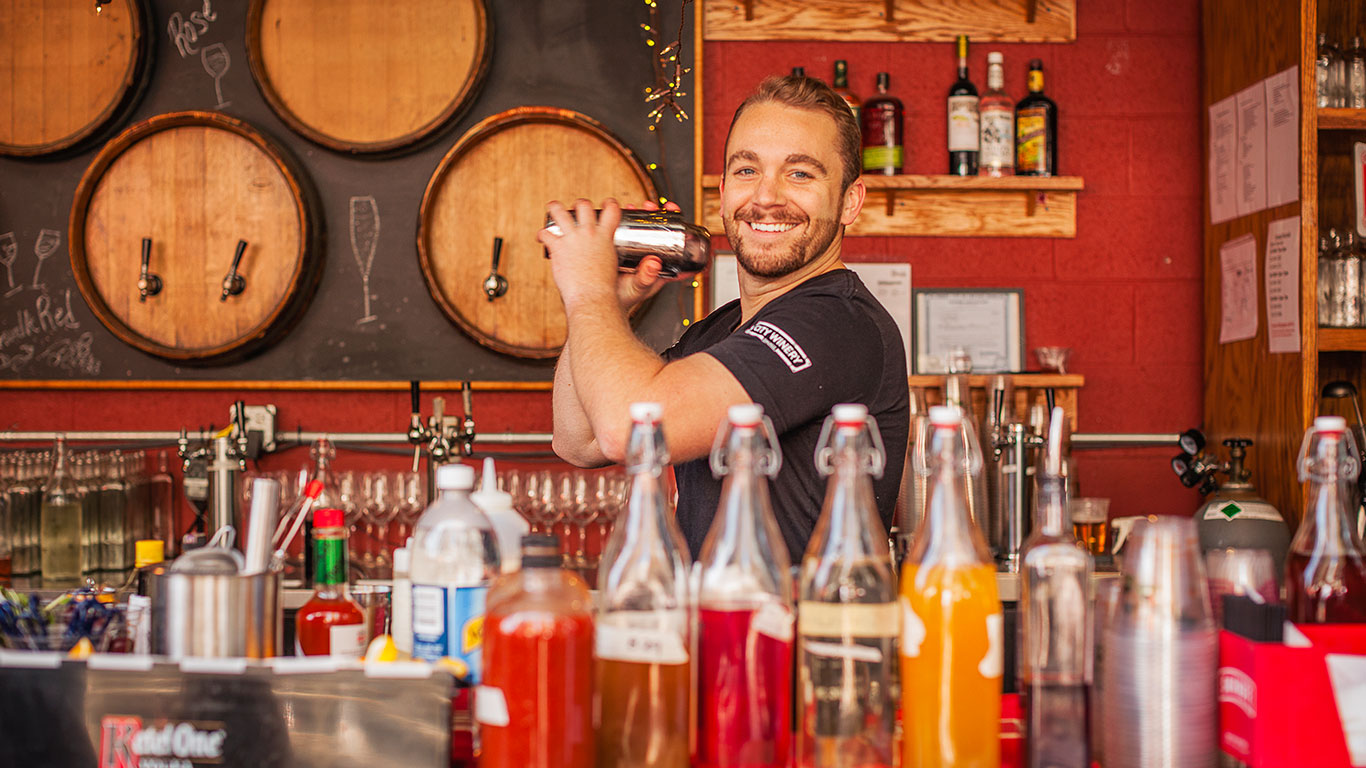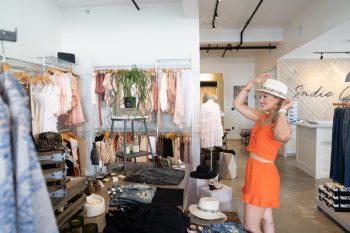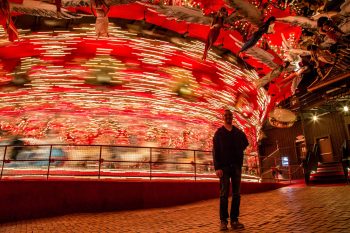Prohibition may have banned alcohol sales in the 1920s and early 1930s, but instead of killing off bars, it just sent them undercover. Speakeasies (so named because you talked quietly about them) sold booze on the sly to patrons who found the right door, said the right words and possibly knew the right person inside. Prohibition ended in 1933, but the fascination with hidden hooch survives. Today, several Chicago bars still maintain an air of speakeasy secrecy, whether they’re tucked away or require a certain local knowledge for admission. Here are 10 to search for.
The Violet Hour
1520 N. Damen Ave.
There’s an art to finding the door to this Wicker Park bar. Inside, take care to observe the posted rules, including no cell phone usage.
Get in: The entrance is usually camouflaged with street art and marked by a lone lightbulb. Once you find the door, make your way past the guard of velvet curtains.
Must-try: Artisanal cocktail choices include Eeyore’s Requiem—a negroni with a kick—and bright pink Trouble Ahead, Trouble Behind.
The Office
955 W. Fulton Market
In keeping with speakeasy spirit, you don’t just open the door to this West Loop bar and walk in. It’s tucked below The Aviary restaurant, where you need a dinner reservation.
Get in: At some point during the meal, your server may invite you downstairs. If not, casually ask if there’s room at The Office. A coveted key unlocks the nondescript door to the tiny bar’s clubby confines.
Must-try: Sample the rare vintage spirits—some older than Prohibition.
Punch House
1227 W. 18th St.
If your dad opened a speakeasy, it would look like this. The 1970s rec room decor includes paneled walls, retro pendants, trophy fish and an aquarium.
Get in: Dine at Dusek’s Board and Beer in Pilsen, then head to the lower level for punch, available in classic and contemporary flavors.
Must-see: Check out a nice nod to the speakeasy era: a secret rotating bookcase.
Three Dots and a Dash
435 N. Clark St.
Can a tiki bar pass for a speakeasy? The decor is post-World War II, not Prohibition. The name Three Dots and a Dash—Morse code for V, as in victory—comes from a drink created to celebrate the war’s end. The fruit garnish—traditionally three cherries and an oblong slice of pineapple—looks like three dots and a dash.
Get in: This River North speakeasy nails the secretive aspect, with an alley entrance, subterranean location and low lighting.
Must-try: Enjoy one of the tropical cocktails. But beware, they’re potent.
Watershed
601 N. State St.
An old jazz lounge in River North caters to fans of craft beers and artisanal spirits. Stone walls, high-backed booths, cushy seats and carpet create an upscale, modern look, but dim lights and a basement setting convey a hideout feel.
Get in: Enter the Pops for Champagne bar and look for a W above the stairs.
Must-try: Each of the 16 house cocktails is served in a different vintage glass.
Green Mill Cocktail Lounge
4802 N. Broadway St.
More than 100 years old, the Green Mill in Uptown operated during Prohibition, but to be safe, a trapdoor behind the bar hid the liquor lift—and the door remains. Cash only.
Get in: Pay a cover charge, silence your phone and find a seat.
Must-see: Today, the bar is famous for its live jazz, not illegal juice. Get there early if you want to sit or see the stage. And look for “Stella,” the topless statue.
Bordel
1721 W. Division St.
Sexy sells at a clandestine cocktail lounge above Black Bull restaurant in Wicker Park.
Get in: Enter via an unmarked door in the Black Bull foyer and a red staircase.
Must-see: You might see burlesque on stage, vintage French erotic art on walls and décolletage on your server. (Bordel is French for brothel, after all.) Inspired by old Paris and Prohibition Chicago, Bordel is Moulin Rouge meets Midwest, a blend of red velvet, jazz, cabaret and magic acts.
The Library
230 W. Kinzie St.
Given its quiet, bookish atmosphere and shelves of leather-bound volumes, this candlelit refuge below Gilt Bar in River North is aptly named—picture a speakeasy at Harvard.
Get in: It’s easier to gain admission here. Make a reservation, then head to a room with red-velvet booths and wooden tables.
Must-try: The Bee’s Knees—a mix of gin, lemon and honey—dates to Prohibition. The honey masked the scent of alcohol.
babyATLAS
3101 N. Sheffield Ave. #1
From the street, all you see is a railing and the bar’s odd name on the brick wall.
Get in: Head down a flight of stairs to this bar below another bar, Matilda, in Lakeview. And watch your steps if you join the dance crowd—space is tight.
Must-see: The music and moves would be foreign to Prohibition-Era partygoers, but the let-your-hair-down vibe fits a speakeasy. And the drinks are reasonably priced—cash only, though.
The Drifter
676-8 N. Orleans St.
A trip to the restrooms at the venerable Green Door Tavern in River North takes you near the hidden door of this intimate bar (it seats fewer than 40), set in an original speakeasy space.
Get in: A knock on the door gains admission to an unpretentious spot that lists drinks on tarot cards. Expect to wait on weekends.
Must-see: Stay for the quirky burlesque performers.
Looking for more things to do in Chicago?
- Read about the city’s multicultural neighborhoods at Explore Global Chicago
- Find Bars and Clubs in Illinois
- Find deep-dish delights with Chicago-style pizza




